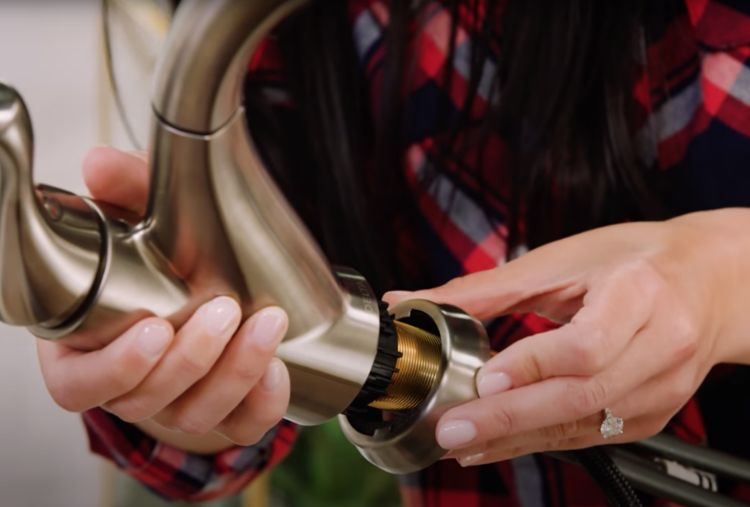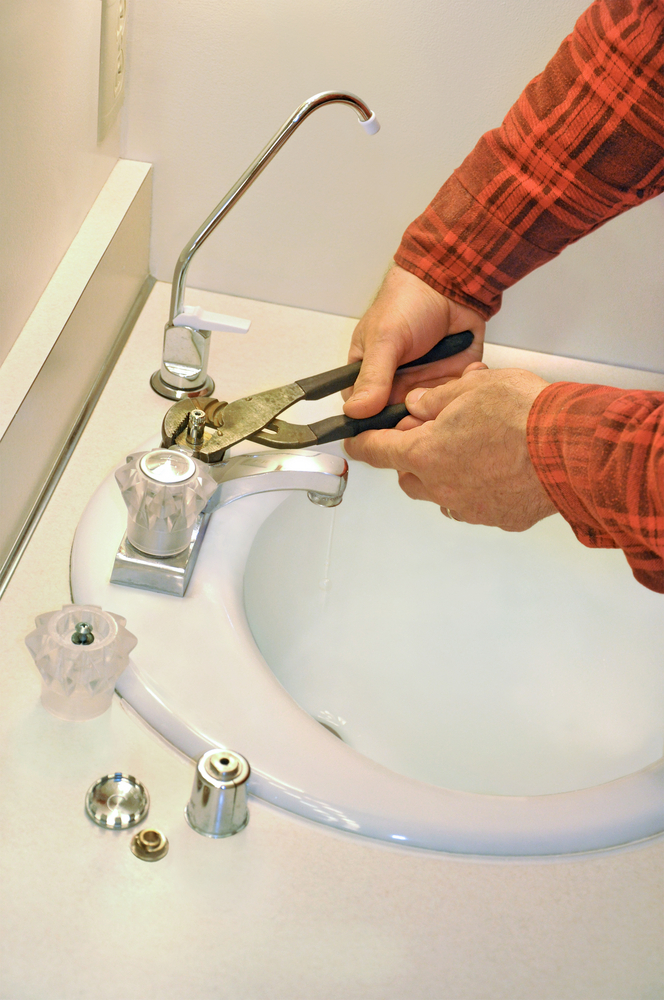We've discovered this post involving Why It's Important to Fix Leaky Faucets below on the net and felt it made sense to quickly share it with you on this site.

Dripping faucets might seem like a small aggravation, yet their influence exceeds simply the aggravation of the noise. From wasting water to incurring unneeded economic prices and health dangers, overlooking a dripping tap can result in numerous repercussions. In this write-up, we'll delve into why it's important to resolve this common family concern promptly and efficiently.
Waste of Water
Environmental Influence
Leaking faucets contribute substantially to water waste. According to the Epa (EPA), a solitary tap trickling at one drip per secondly can lose greater than 3,000 gallons of water each year. This not only stress water sources but also influences ecosystems and wildlife depending on them.
Step-by-Step Guide to Taking Care Of a Dripping Tap
Devices Called for
Before trying to fix a leaking faucet, collect the essential devices, consisting of a flexible wrench, screwdrivers, substitute components (such as washers or cartridges), and plumber's tape.
Usual Tap Issues and Their Solutions
Recognize the type of faucet and the particular issue triggering the drip. Typical troubles consist of damaged washing machines, rusty shutoff seats, or faulty O-rings. Describe manufacturer guidelines or on-line tutorials for step-by-step support on fixings.
Financial Expenses
Increased Water Bills
Beyond the environmental impact, leaking faucets can pump up water costs substantially. The accumulated waste over time translates into greater utility expenditures, which could have been avoided with timely repair work.
Possible Property Damage
In addition, prolonged leaking can cause damage to components and surface areas bordering the tap. Water build-up can trigger staining, rust, and even structural issues if left neglected, causing additional fixing expenses.
Wellness Problems
Mold And Mildew and Mildew Growth
The continuous visibility of moisture from a trickling faucet develops a suitable atmosphere for mold and mildew and mold growth. These fungis not only jeopardize indoor air quality yet additionally present health and wellness dangers, particularly for people with respiratory problems or allergies.
Waterborne Diseases
Stagnant water in dripping taps can come to be a breeding place for bacteria and other virus, enhancing the threat of waterborne illness. Contaminants such as Legionella bacteria prosper in stationary water, potentially leading to major ailments when consumed or breathed in.
DIY vs. Professional Repair service
Pros and Cons of Do It Yourself Repair Service
While some may try to repair a dripping faucet themselves, do it yourself repair services come with their own collection of challenges. Without proper expertise and tools, do it yourself efforts can exacerbate the concern or cause insufficient repairs, extending the trouble.
Benefits of Hiring a Professional Plumber
Hiring an expert plumber guarantees that the underlying reason for the leaking tap is dealt with efficiently. Plumbing technicians have the know-how and tools to identify and fix faucet problems successfully, conserving time and minimizing the risk of further damage.
Environmental Duty
Individual Payment to Conservation
Taking obligation for repairing leaking faucets straightens with broader efforts towards water conservation and ecological sustainability. Every individual's actions collectively make a significant influence on maintaining valuable resources.
Lasting Living Practices
By prioritizing timely repair services and embracing water-saving habits, people add to sustainable living techniques that profit both present and future generations.
Preventive Measures
Normal Maintenance Tips
To avoid dripping faucets, execute regular maintenance such as cleaning aerators, checking for leakages, and replacing worn-out parts without delay. In addition, take into consideration mounting water-saving gadgets or updating to a lot more effective components.
Relevance of Prompt Repairs
Addressing trickling taps as soon as they're discovered protects against further water wastage and prospective damages, inevitably conserving both water and money in the long run.
Effect On Residential Or Commercial Property Worth
Assumption of Well-Maintained Building
Keeping a residential or commercial property in good condition, including dealing with upkeep concerns like trickling taps, improves its perceived value and desirability among possible customers or renters.
Impact on Resale Worth
Features with well-kept plumbing fixtures, including taps, command higher resale values in the realty market. Attending to dripping taps can contribute to a positive impact throughout property examinations and settlements.
Conclusion
Resolving a dripping faucet goes beyond plain comfort; it's a necessary step toward preserving water, decreasing financial costs, and safeguarding health and home. Whether with do it yourself fixings or professional support, taking action to take care of dripping faucets is a small yet impactful method to promote accountable stewardship of sources and add to a healthier, a lot more lasting future.
How to Fix a Dripping or Leaky Faucet
A leaking faucet is one of the most common problems that homeowners encounter, but it being commonplace doesn’t make it any less annoying. The constant drip drip drip of a leaking bathtub faucet, showerhead, or sink tap can disturb your home’s serenity. Left neglected, a dripping faucet can also result in higher water bills and discoloration or mold growth in your sink or plumbing fixtures.
Fortunately, you don’t have to be a trained plumber to know how to stop a dripping faucet. With some basic tools, replacement parts, and a little patience, leaky faucet repair is a breeze. In this article, we’ll explain what causes dripping faucets and how you can fix them.
What Causes a Leaking Faucet?
Kitchen and bathroom faucets come in all manner of designs, but most involve some combination of valves, O-rings, seals, and washers. The O-ring is usually the weakest link, but any one of these pieces can wear down over time. Heat, moisture, temperature fluctuations, minerals, mold, and movement can contribute to warping and corrosion, breaking the watertight seal. This just comes with the territory of being a homeowner. Everything is always subject to wear and tear, and some component parts of your appliances and fixtures need to be replaced on occasion. At least replacement O-rings are cheap!
More rarely, dripping faucets can be a symptom of excessively high water pressure. Were this the case in your home, you would probably notice that the leak is not isolated to one faucet. Water pressure issues are harder to resolve on your own. We recommend contacting a professional plumber if you suspect your water pressure is too high.
How to Fix a Dripping Faucet
Pipe wrench or monkey wrench Allen wrench set Screwdrivers Old towel or rag Shut off the water.
Before you do anything, you need to turn off the water to keep from drenching your kitchen or bathroom. You should find a valve under the sink and against the wall. Once you’ve turned this valve, try turning the faucet on to confirm that the water source has been cut off.
If you can’t locate your local valve for the faucet you’re working on, you can always shut off the water to the house at the main valve. Of course, this will prohibit anyone from using the sinks, showers, or toilets while you’re working on the faucet that’s giving you trouble.
Plug or block the drain.
You’ll be disassembling the faucet and removing some small bits of hardware. Plug the drain with a stopper or rag to avoid the possibility of a small screw falling into your P-trap.
Take apart the faucet assembly.
There are several varieties of kitchen and bathroom faucets, each with its own manner of assembly. For detailed instructions on how to disassemble your faucet, you can refer to the fixture’s manual or contact the manufacturer. If you know whether you have a ball, disc, cartridge, or compression faucet, you can find detailed schematics online.
In general, you need to begin by removing the faucet handles. You might notice a small screw that you’ll need to remove with a screwdriver or Allen wrench. If you don’t see any visible securing hardware, it’s likely hidden under a decorative cap that can be unscrewed or popped off with flathead screwdriver.
Remove each piece methodically, consulting a schematic when necessary. Take notes or arrange the pieces in such a way to make it easier to correctly reassemble the faucet later.
Remove the cartridge.
Once you’ve removed the handles and securing hardware, you should be able to remove the valve cartridge or stem. Some cartridges will slide right out. Other faucet models will require you to loosen a nut with a pipe wrench before you can remove the valve stem.
Examine the exposed hardware.
With the cartridge or stem removed, inspect the component parts. Check the rubber O-rings for wear and tear. Also examine the seat washer for corrosion or other damage. These pieces are usually the responsible parties for a dripping faucet, but it’s worth inspecting the other component parts while you have the faucet disassembled.
Find replacement parts.
Once you’ve identified which faucet component has failed, find an identical replacement. Your local hardware store should have O-rings, seat washers, and other standard components in stock. If you have a luxury or uncommon faucet, you may have to contact the manufacturer for a replacement part.
It’s a good idea to take your old parts with you to the hardware store so you can compare them with the store’s inventory and be sure you’re purchasing the correct replacement.
Reassemble the faucet.
With your new parts in hand, reconstruct the faucet and handles. Don’t be tempted to overtighten screws or nuts. You might think this could create a better seal, but it can instead damage or bend a delicate part of the assembly and create a new problem for you.
Turn on the water and test the faucet.
The only thing left to do is test your work. Unplug the sink, turn the water back on, and try the faucet. Congratulate yourself on a job well done!
https://www.libertyhomeguard.com/how-to-fix-a-dripping-or-leaky-faucet/

We hope you liked our piece on Why Are My Faucets Dripping (And Can I Fix It Myself)?. Thanks a lot for spending some time to read our piece. If you please set aside a second to share this blog if you enjoyed reading it. Bless you for your time. Kindly come visit our blog back soon.